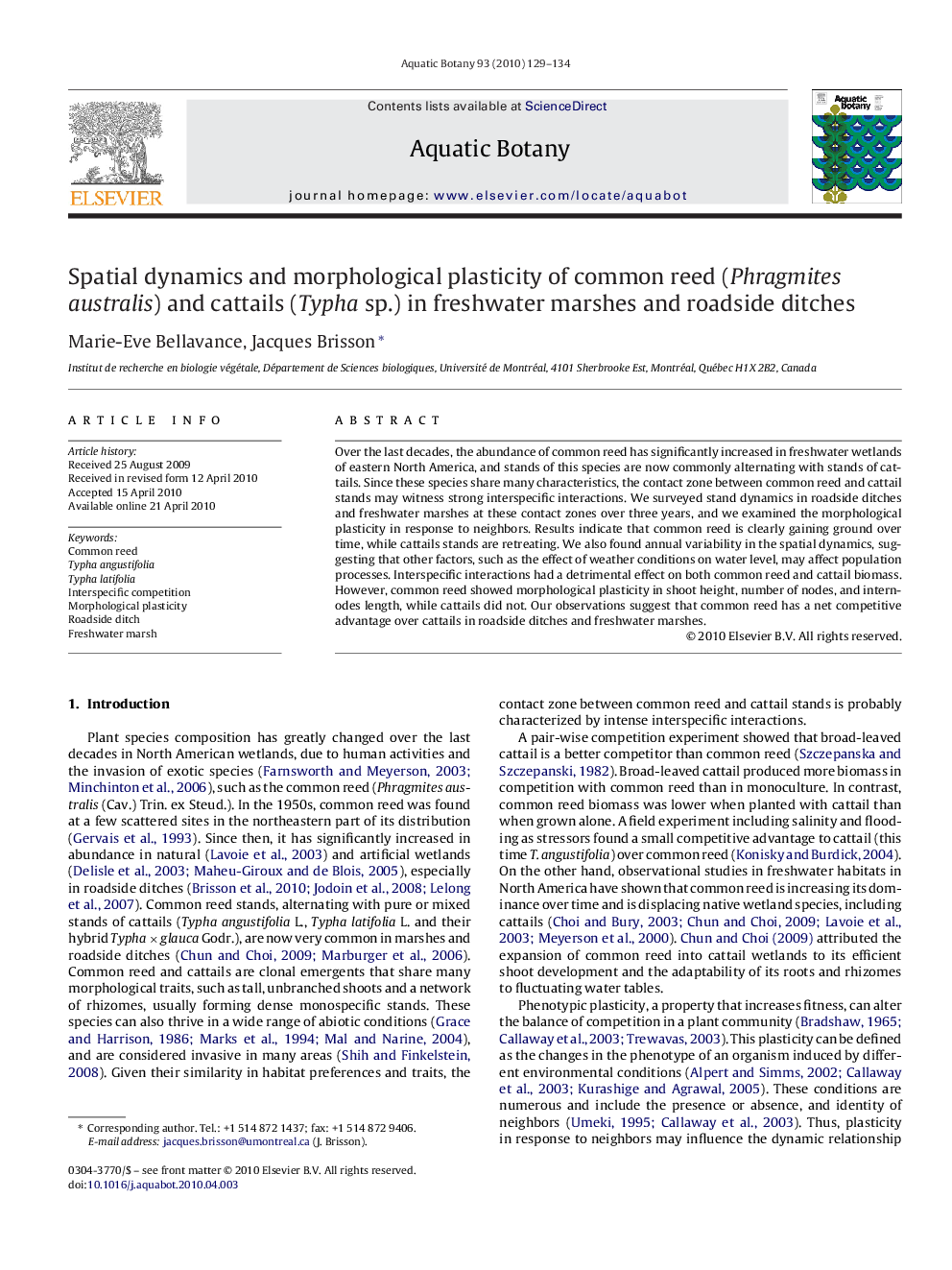| Article ID | Journal | Published Year | Pages | File Type |
|---|---|---|---|---|
| 4528291 | Aquatic Botany | 2010 | 6 Pages |
Over the last decades, the abundance of common reed has significantly increased in freshwater wetlands of eastern North America, and stands of this species are now commonly alternating with stands of cattails. Since these species share many characteristics, the contact zone between common reed and cattail stands may witness strong interspecific interactions. We surveyed stand dynamics in roadside ditches and freshwater marshes at these contact zones over three years, and we examined the morphological plasticity in response to neighbors. Results indicate that common reed is clearly gaining ground over time, while cattails stands are retreating. We also found annual variability in the spatial dynamics, suggesting that other factors, such as the effect of weather conditions on water level, may affect population processes. Interspecific interactions had a detrimental effect on both common reed and cattail biomass. However, common reed showed morphological plasticity in shoot height, number of nodes, and internodes length, while cattails did not. Our observations suggest that common reed has a net competitive advantage over cattails in roadside ditches and freshwater marshes.
